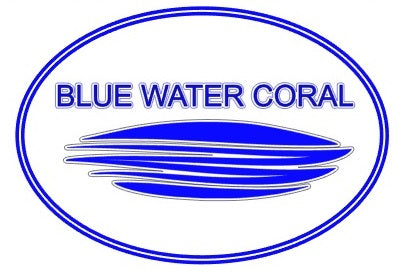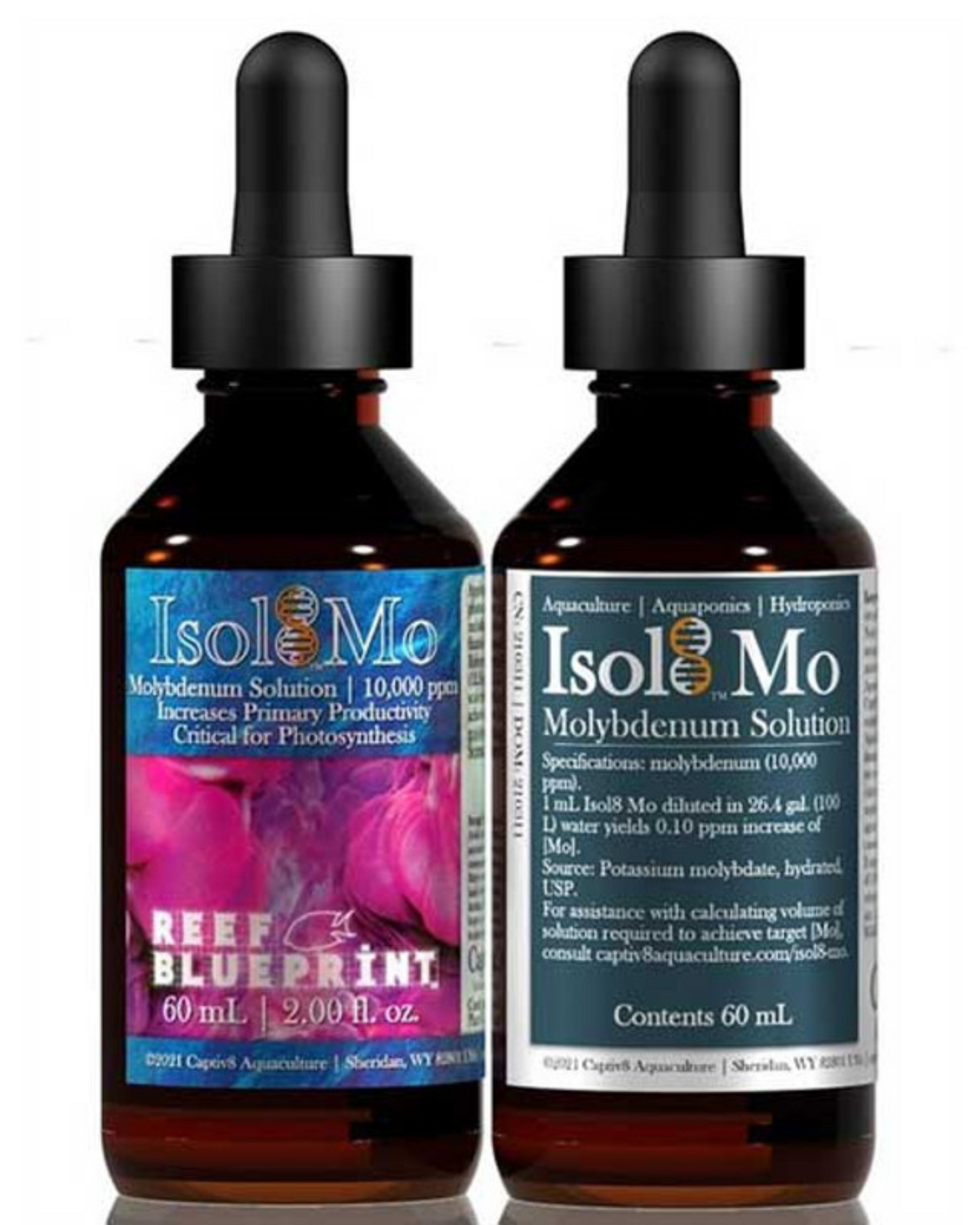Parameter
-
Molybdenum
Value
- 10,000 ppm
Characteristics
-
Required by photoautotrophs (including zooxanthellae) for photosynthesis and nitrogen assimilation (nitrate reduction, nitrogen fixation)
-
See 'Application' section below for use of this solution vs. Isol8 MT.
-
Active Components: Potassium molybdate, hydrated, USP.
Basic Application
-
1 drop (0.05 mL) per 12.5 gallons (47.0 L), or 1 mL per 250 gallons (946 L), provides NSW [Mo].
-
1 mL per 26.4 gallons (100 L) increases [Mo] by 0.10 ppm.
-
Reference Standard [Mo]:
-
1.06x10-2 ppm (S=35.0)
-
1.12x10-2 ppm (S=40.0)
-
-
In established systems, increase [Mo] up to 5% of existing ionic value daily, until desired value or reference standard is reached.
APPLICATION
Keep out of reach of children and unauthorized persons. Avoid contact with skin, eyes, and mucous membranes. Store in a cool, dry location away from sunlight.
All trace elements critical to continued functioning of photoautotrophs, including molybdenum, are provided in Isol8 MT, which offers a simpler method of dosing the aforementioned elements in ratios mirroring those of natural seawater, and is recommended for general husbandry of recirculating marine ecosystems. However, molybdenum is one of the handful of trace elements in which individual dosing may be warranted. Due to it's role in the assimilation of nitrate, molybdenum can become a biolimiting nutrient in systems with prolific growth of photoautotrophs, including those utilizing algal turf scrubber filtration. In cases wherein the nitrate concentration within such a recirculating ecosystem will not decrease, in spite of adequate carbon and phosphorus, it is possible that molybdenum content is insufficient. This can be verified through an ICP analysis (to obtain accurate molybdenum values, Captiv8 Aquaculture recommends ICP conducted by Reef Masters). The importance of monitoring molybdate content, and supplementing it if/when necessary, is directly related to primary productivity, which impacts the growth rates of hermatypic invertebrates. Additionally, systems in which nitrate nitrogen becomes limiting to primary productivity may experience rates of molybdenum uptake which exceed the balance provided by Isol8 MT, and in these systems it is also warranted to monitor and supplement with molybdenum as required.
Although we recommend that regular analysis be performed to verify molybdenum content and to provide a baseline value for future adjustment, there is positive feedback associated with molybdenum dosing and, in some systems, this may be adequate to guide the user in modifying dosing rate to suit cohort requirements. The aforementioned feedback is a reduction in the system's nitrate concentration relative to the value recorded just prior to commencement of molybdenum dosing. By monitoring the nitrate value at the same time each day, a general regimen of molybdenum dosing can be achieved.
The rate of ion depletion due to photoautotroph uptake is driven by various chemical and physical factors which are unique to each independently-operating recirculating system, and which are constantly changing as photoautotroph biomass increases and decreases.
Monitoring (daily) the system's concentrations of elements provided by this formulation, as well as the concentration of nitrate, and referencing apparent changes in coloration of zooxanthellate cnidarians will enable User to adjust dosing of this formula to suit system requirements, improving overall effectiveness and resulting in less wasted solution.
Users unable to perform analyses for elements provided by this formula are recommended to monitor nitrate concentration and apparent changes in coloration of zooxanthellate cnidarians, adjusting dosage to suit system requirements. This visual approach to dosing is fastest, and for many systems will be adequate.
Recommended is diluting an appropriate volume of this solution into a larger volume of purified water (with a purity of at least 98%), and applying this diluted solution to the system with an automated dosing system throughout the photoperiod. Dosing frequency is directly proportional to stability of ionic concentrations and, resultantly, gradual changes in the coloration (manifesting as intensification) of coloration of zooxanthellate cnidarians. A 1 - 10 s drip interval during the photoperiod provides adequate ionic stability, and is recommended.
If no automated dosing system is available, then apply solution manually each day. Dosing frequency is directly proportional to stability of ionic concentrations and, resultantly, consistent changes in coloration of zooxanthellate cnidarians. Dosage volume per 24 h is divided by the dosing frequency.
It is not recommended that this formulation be dosed fewer than four times weekly.
Reference Standards: 1 drop (0.05 mL) Isol8 Mo diluted in 12.5 gal. (47 L) water yields 0.005 ppm increase of [Mo]. Undiluted, 1 drop treats a volume of 12.5 gallons (47 L) at the reference standard of 1.06x10-2 ppm.
DISCLAIMER
Notice: It is not possible to eliminate all risks associated with the use, handling, or storage of this product. Ineffectiveness, injury to crops and/or livestock, or other unintended consequences may result due to factors outside the control of Captiv8 Aquaculture or the seller. Buyer or user shall assume all such risks. For details, go to Terms and Conditions. Consult SDS before use.
Disclaimer: Captiv8 Aquaculture warrants that this product conforms to the description, and is reasonably fit for the purposes described, on its label. In no event shall Captiv8 Aquaculture or the seller be held liable for any incidental, consequential, or special damages, loss, or injury, including, without limiting, lost profits, resulting from the use or handling of this product. The exclusive remedy of the buyer or user for all claims shall be the return of the purchase price of this product. Express and implied warranties are disclaimed. Captiv8 Aquaculture does not authorize any agent or representative to make any other warranty, guarantee, or representation concerning this product.


